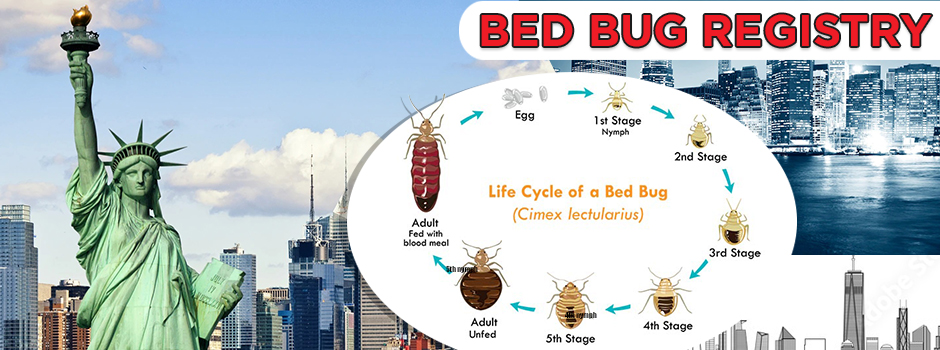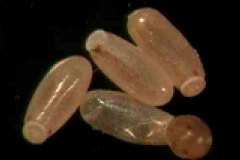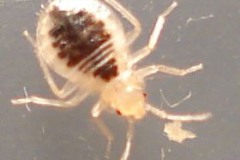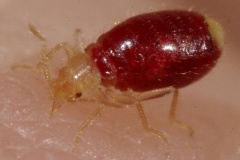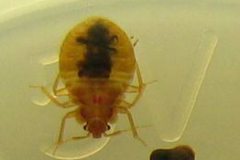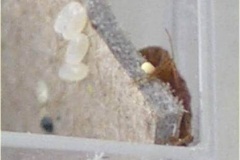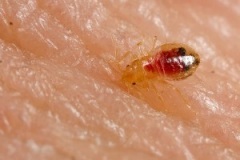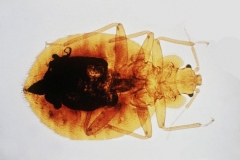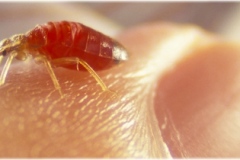Categories
- Bed Bug
- Bed Bug Cream
- BED BUG DATABASE
- Bed Bug Home Remedies
- Bed Bug Oil
- Bed Bug Remedies
- Bed Bug Spray
- Bed Bugs New York
- Bed Bugs Vancouver
- Bed Bugs World
- Bed Bugs American Samoa
- Bed Bugs Canada
- Bed Bugs Guam
- Bed Bugs North Mariana islands
- Bed Bugs Puerto Rico
- Bed Bugs United States
- Bed Bugs Alabama
- Bed Bugs Alaska
- Bed Bugs Arizona
- Bed Bugs Arkansas
- Bed Bugs California
- Bed Bugs Colorado
- Bed Bugs Connecticut
- Bed Bugs Delaware
- Bed Bugs Florida
- Bed Bugs Georgia
- Bed Bugs Hawaii
- Bed Bugs Idaho
- Bed Bugs Illinois
- Bed Bugs Indiana
- Bed Bugs Iowa
- Bed Bugs Kansas
- Bed Bugs Kentucky
- Bed Bugs Louisiana
- Bed Bugs Maine
- Bed Bugs Maryland
- Bed Bugs Massachusetts
- Bed Bugs Michigan
- Bed Bugs Minnesota
- Bed Bugs Mississippi
- Bed Bugs Missouri
- Bed Bugs Montana
- Bed Bugs Nebraska
- Bed Bugs Nevada
- Bed Bugs New Hampshire
- Bed Bugs New Jersey
- Bed Bugs New Mexico
- Bed Bugs New York
- Bed Bugs North Carolina
- Bed Bugs North Dakota
- Bed Bugs Ohio
- Bed Bugs Oklahoma
- Bed Bugs Oregon
- Bed Bugs Pennsylvania
- Bed Bugs Rhode Island
- Bed Bugs South Carolina
- Bed Bugs South Dakota
- Bed Bugs Tennessee
- Bed Bugs Texas
- Bed Bugs Utah
- Bed Bugs Vermont
- Bed Bugs Virgin Islands
- Bed Bugs Virginia
- Bed Bugs Washington
- Bed Bugs Washington DC
- Bed Bugs West Virginia
- Bed Bugs Wisconsin
- Bed Bugs Wyoming
- BedBug Removal
- BedBugs in Michigan
- Canada Bed Bugs
- Do it yourself Bed Bug
- Exterminator Bed Bugs
- Health
- Pest Inspection
- Toronto Bed Bugs
- Welcome to Bed Bugs
Registry Sites List
- Bronx Bed Bug Registry Infestation Maps, Residential And Hotel
- Brooklyn Bed Bug Registry Infestation Maps, Residential And Hotel
- Manhattan Bed Bug Registry Infestation Maps, Residential And Hotel
- Nyc Bed Bug Registry Infestation Maps, Residential And Hotel
- Queens Bed Bug Registry Infestation Maps, Residential And Hotel
- Staten Island Bed Bug Registry Infestation Maps, Residential And Hotel
Recommended Sites
Author Archives: toronto
News Links:
How to bed bug proof your luggage at a hotel …
Being on vacation and probably spending quality time with family and friends is always a beautiful experience. Unfortunately, sometimes you may get back home with an additional company. Yes, bed bugs can find their way into your luggage while at the hotel. These pests can be killjoys, especially when they live long enough to lay eggs and develop into an infestation.
You can avoid being troubled by bed bugs when you find a way to block them from gaining entry into your suitcases. Hotels usually are hotspots for these pests due to the high traffic of people from everywhere. Despite the facilities observing high cleanliness levels, there are still possibilities of new infestations as people keep coming more. Which are some of the reliable ways to secure the luggage from these pests?
Buy luggage coversThese days, some covers are meant explicitly for suitcases and, most importantly, for keeping bed bugs at bay. What you need is to always make the bags, and other luggage is on the cover throughout. Being reluctant to do this even for a minute could pave the way for the pests. The majority of the bed bug protectors go inside the bags.
They, unfortunately, dont do comprehensive coverage of the luggage. This is why the external bags are the best. They seal even the handles and zip areas which give room for bed bugs. A typical plastic bag can do the job perfectly well. Being transparent, you will have the ability to have a clear view of things. Bed bugs can hardly burrow through these bags; hence you can be sure of a total block. However, be much focused on the wrinkles on the bag surface, some could hide there.
Use spray repellantIt is natural for bed bugs to avoid substances that they find toxic to them. With their sense of smell, they can tell where to go and where not to. This is why using repellants is a brilliant idea if you want these insects not to be part of your luggage. In a domestic setting, these bed bug repellants may not be a great idea as they usually may make them stay at specific points and start to multiply.
However, when traveling, you need to consider the repellants as they protect your luggage accordingly. It is a beautiful idea to refrain from DIY sprays such as peppermint as they kill on contact. This means they cannot help in keeping off the insects afterward. The synthetic sprays in the market are the best since they have active components which can surface for days or weeks. It means that they will repel any potential invaders at the hotel.
Find knowledge onlineThese days, some websites are resourceful when it comes to information. Some of these belong to experts or people with passion in specific fields. Therefore, there are worthy sites that you can surf through and get relevant content concerning bed bugs. This means that such websites make you know how to safeguard your luggage from the bed bugs in your room at a hotel. The focus on the different routes the pests use makes you understand how better to lay protective measures.
You may end up learning more about the behavior of the bed bugs. For instance, you know about the characteristics of male and female bugs and how they tend to spread. Such knowledge acts as an eye-opener of how significant it is to prevent them from entering your home through the luggage.
Do some inspection when you reach homeIt is likely to be exhausted after a vacation somewhere. The recreational activities and long journey could make you only wish for a hot coffee, shower, then sleep. However, this may not be an excellent idea for anyone wishing to curb the spread of bedbugs from the hotel. Its a pretty good thing to keep your luggage at a specific point, such as the balcony, and scrutinize each item.
You could do this with someone extra as more eyes are better at ensuring everything is alright. To be on the safer side, consider putting all the clothing into the washing machine, and this includes both the clean and untidy ones. Through this, both the eggs and the bed bugs themselves will be exterminated.
Check your hotel room wellYou could be mind-blown by the aesthetic structures and sleek environment whenever you arrive at your accommodation unit. The truth is, this is not an indicator that you are safe. It is always good to do some inspection at the potential areas where the bed bugs hide. This could be along the inner edges of the bed. Focus also on the cracks in the furniture in the room. These checks are the last thing you want on a vacation as you only want to spend quality time. They are worth doing since you can be sure of not having sleepless nights when the pests start attacking. If you notice anything unusual, you can always ask the management to find you another room. Restaurants also can allow refunds meaning you can quickly shift to a different hotel if the place no longer pleases you.
Separate used clothes
Photo by David Lezcano on Unsplash
There is a high chance of catching bed bugs from the outdoor spaces while at a hotel. This could be at the seminar rooms, dining areas, rooftops, and the like. Thus, whenever you wear some clothes, be more well-organized and keep them in a separate place.
With this, you lower the probability of mixing the used and the clean clothes, which may increase the chances of spreading the pests if any is present. If possible, have some cover bags for such items. Additionally, keep your room organized. For instance, avoid leaving clothes on the floor, which puts you at a higher risk of bed bugs.
While spending a night or some in a hotel, there is a need to be extra cautious not to pick some bed bugs. Your luggage, therefore, needs proper shielding, such as by having covers for the suitcases. Another option is using bed bug repellant sprays. Most importantly, gather information online on everything to do with bed bugs as it makes you more informed hence vigilant.
Main photo by Brevit on Unsplash
Originally posted here:
How to bed bug proof your luggage at a hotel ...
Posted in Canada Bed Bugs
Comments Off on How to bed bug proof your luggage at a hotel …
What Do Bed Bugs Eat? | Terminix
While bed bugs like human blood, they have been known to feed on animals like bats too. Discover more about bed bugs and their different types.
Bed bugs. You want them gone. They want to take over your home and your bed. They do that well, staying hidden by day and preying on you at night while you are defenseless. This works for them and keeps them out of trouble with their human blood donors. But what do bed bugs eat besides blood?
There are many species of bed bugs, and they all feed on blood. Most species prefer one mammal over another. For some, the blood of specific mammals is required for them to lay viable eggs and survive. Most bed bugs, however, will feed on any blood available to sustain themselves, if their preferred warm blood is not available.
The most common species of bed bug associated with people is formally named Cimex lectularius. Human blood is their primary energy source. We house them, feed their young and provide them with the nutritional elements they must have to breed and produce viable eggs.
Should bed bugs be found in your house, they will most likely be C. lectularius, but it is important to remember that there is a possibility of other species invading, such as bat bugs. Bat bugs are in the same family as bed bugs and formally named Cimex adjunctus. As their name indicates, bat bugs live with and feed mostly on bats. Like C. lectularius, they will feed and survive on the blood of other mammals, including humans, but they must have bat blood to reproduce.
It is very important to identify which Cimex species you have, because their habits and habitats are quite different. In a typical bed bug infestation, close to 70 percent of the bed bugs will be either on or very close to the bed area.
You may not realize you have a bat infestation until bat bugs are identified in your home. Bat bug infestations will usually be in the attic or wall voids where bats have been nesting. These hiding spots are in completely different locations than that of bed bugs. Control must include removal of the bats and the bat bugs.
What do bed bugs eat? They might snack on animals. They might have bat-tasting relatives. But in the end, the bed bugs favorite thing to eat is your blood. It will probably take a professional pest management specialist to identify whether you are dealing with human bloodsuckers or their bat brethren. The primary identifier is the relationship between the length of the hairs on the pronotum and the size of the eyes. Dont know what a pronotum is? Then save your time, and your blood call a professional.
Read the original:
What Do Bed Bugs Eat? | Terminix
Posted in Canada Bed Bugs
Comments Off on What Do Bed Bugs Eat? | Terminix
Signs of Bed Bugs | Terminix
If there are bed bugs in your room, you might be wondering how to treat bed bug bites and eliminate the pest. And if you're nervous about the possibility of bed bugs in your room, checking for bed bugs is easy, if you know how. Learn how to perform a DIY check today.
Unfortunately, bed bugs can behard to find. And despite the ongoing bed bug epidemic, many people still don't know what a bed bug even looks like. This University of Minnesota extension page does a good job explaining the complexities of finding live bed bugs considering their changing stages of life, saying:
"...eggs hatch in about six to 10 days and the newly emerged bed bug nymphs seek a blood meal. Immature nymphs molt five times (i.e., they shed their outer exoskeletons in order to grow) before reaching adulthood. They need to feed at least once before each molt, although they could feed as often as once a day. There may be three or more generations per year."
You can see pictures of bed bugs in their various stages over at the Environmental Protection Agency (EPA) website, but keep in mind that bed bugs are nocturnal. Identifying bed bugs during the day requires a bit of good or bad luck (depending on your view) and some persistence.
Bed bug bites are often mistaken for mosquito bites or bites from other insects, and some people show no reaction at all to bed bug bites. So its no wonder they go undetected for long periods.
However, if you know the right place to look, you may be able to spot bed bugs. Adult bed bugs can be seen with the naked eyeno equipment is required. Check:
Mature bed bugs are about the size of an apple seed (approximately five millimeters). They are reddish-brown, wingless and flat, although they swell up like a torpedo after a blood feeding. When that happens, they change to bright red in color, taking days to return to reddish-brown.
Immature bed bugs are categorized by one of the five immature stages as they approach adulthood. They can also be seen by the naked eye, though the bed bugs in the youngest stage are very difficult to spot. Eggs are even smaller and much harder to see but can provide another sign of bed bug presence. Eggs are pearly white, found in clusters and are about one millimeter long.
Bed bugs congregate near where their host (human) sleeps, creating aggregations. Bed bugs from all five stages of development group together, which means they may vary in shapes and sizes. Among these groups, remains of exoskeletons (bed bug shells), feces and egg castings accumulate. A variety of conditions may cause aggregation, including specific smells, chemical stimuli, stimulation of antennae and microclimate factors such as temperature, humidity and light. Aggregations can be found around wood framing like that around a closet door, inside chipped paint indentions, around baseboards, curtain rods, air conditioners and personal belongings.
Bed bugs are smart enough to hide but not smart enoughto clean up the evidence of their bloodthirsty crimes. These careless clues are the best indicator your room is overrun with bed bugs since secondary signs of bed bug infestation are visible both night and day:
Do you suspect bed bugs in your room? Take the sheets off your bed and look at the edges, crevices and piping of your mattress. Bed bugs are flat, almond-shaped, reddish-brown and very tiny. Look in the box spring and check for various sizes and stages, from bed bug eggs to adults. Varying size also applies to secondary signs of infestation (i.e., cast/shed skins).
Here's a little more detail about some common signs of bed bugs:
Look out for empty shells that may exist where bed bugs aggregate and feed. Bed bugs grow with each blood meal on the way to maturity. In doing so, they shed their exoskeletons or shells in order to grow larger. This process is called molting. Each bed bug will molt five times as they progress through each of the five immature stages. Where infestations grow large, there will be hundreds if not thousands of molted skins left behind, regardless of the duration of the infestation. The shells look like the bed bug itself but are translucent. They are different sizes due to the different life stages.
Signs of bed bugs include liquid waste, which is found wherever they go. Bed bug fecal spotsdiffer from blood stains. As bedbugs.net points out:
"Because bed bugs generally feast on the blood of their hosts, creeping out of hiding places at night to latch on, some people think that fecal stains from the insects should at least be tinged with the color of blood. This is not, in fact, the case. Fecal spotting tends to resemble smears or stains, which are dark brown or even black. This is because the blood has been digested and excreted."
Bed bugs are ectoparasites, meaning theylive on the outside of their host and feed on its blood. They feed between five to seven days whenever a host is present.
Here's how to perform a DIY bed bug check. You will quickly learn how to tell if your home has been invaded and how to treat bed bug bites if you have them. Once you confirm the infestation has begun, remember that the main goal is to end it even quicker.
The most telltale sign of a bed bug problem isn't the bed bug's bite. As the United States Environmental Protection Agency points out:
"Bites on the skin are a poor indicator of a bed bug infestation. Bed bug bites can look like bites from other insects (such as mosquitoes or chiggers), rashes (such as eczema or fungal infections) or even hives. Some people do not react to bed bug bites at all."
Look for these signs of symptoms of a bed bug bite:
Check out these pictures of bed bug bites from American Family Physician, showing the characteristic wheals (temporary raised, red, itchy welts) and clusters associated with the aftermath of a feeding.
Now that you know the signs of a bed bug infestation, here's how to get rid of bed bug bites. The American Academy of Dermatology recommends you see a dermatologist if you have multiple bites, blisters, oozing, pus or any other signs of a severe allergic reaction or infection. Otherwise, their recommended bed bug bite treatment is:
"Wash the bites with soap and water. This will help prevent a skin infection and help reduce itchiness. If the bites itch, apply a corticosteroid cream to the bites. You can get a weak form of this medicine without a prescription at your local drugstore. Stronger corticosteroids require a prescription."
Bed bugs are very difficult to get rid of. They typically require a strategic approach to using multiple methods to fully remove them from your home once they have established an infestation. That's why it's important to contact a professional who's knowledgeable and trained in bed bug control to inspect your home and determine the best treatment methods.
Originally posted here:
Signs of Bed Bugs | Terminix
Posted in Canada Bed Bugs
Comments Off on Signs of Bed Bugs | Terminix
Bed Bug Reports – Check Hotels and Apartments Before You Stay
1Bed Bug Background
Bed bugs are wingless creatures that measure about 3/8 - 1/4 inches long. That is very small. The most distinguishing parts I have found about them is their red brown color and they are very flat. Pictures do not do them justice. Most pictures show them from the top and they look round, like a tick full of blood. Just like ticks, they do eat blood. After they eat blood they are bright red.
During the day bed bugs hide. They are nocturnal. If you get bit, you will most likely be bit on the upper body. The shoulders, neck or arms. A truly disturbing fact is that bed bugs can live up to one year without feeding. So left on their own through abandoned hotel suites, or summer homes, they will still be alive and well and ready to feed when they find an animal or human.
Bed bugs normally start infestations by someone bringing them home. A visitor who has luggage from a hotel are often culprits. They could have hidden in that luggage for a year and when Uncle Billy visits, you could have an infestation in your house almost immediately.
2Bed Bug Infestations.How To Get Rid Of Bed Bugs
The first step to take after finding even 1 lowly bedbug is to immediately launder all bedding. Studies have shown that most bedbugs are found within fifteen feet of your bedding. These studies report that this is only 85-90% of the time. This is not good enough for you to only clean the bed area. Make sure you dry the the bedding with VERY high heat. It is the heat that will kill the bed bugs. Make sure you wash your clothes in this same manner.
I recommend getting rid of the mattress and box spring. I don't care how much it costs. This will be well worth it. Most people are in need of new bedding anyway. Have you ever seen dust mites? They can also be infested in your bedding. Give your vaccum a thorough cleaning, before and after. I oftentimes clean mine with disinfectant wipes. For your new mattress, I recommend getting a mattress case. In case of future infestations, you can throw that out.
NOTE: You do not need to get rid of mattress or box springs if you hire a professional who knows what they are doing. Professionals can also save your furniture. This may be worth the money hiring a professional. Do research before hiring a professional make sure they use the latest and greatest when servicing. Also getting an inspection from a certified Bedbug dog does help a lot.
3How to Check Your Hotel Rooms For BedBugs
Bedbugs (or bed bugs) are becoming an epidemic in hotel rooms throughout the United States. Larger cities, especially New York City are literally infested with them. Before staying in a hotel room for the night these days, it is best to spend five minutes and check the room for bedbugs. Some of the pictures of victims are downright gruesome. The bugs come in the night and bite along the thickest veins in your legs in the middle of the night where your slumber is at it's deepest level. Bedbugs are small black creatures, but you should be able to pick them out by following a few simple procedures. Here are some tips to and information on how to check for bed bugs around the hotel room.
Very strong alcohol like steri fab may aid you in their death but once again being that alcohol is also a disinfectant it does not leave a residual and must be applied directly to the bug.
Visit link:
Bed Bug Reports - Check Hotels and Apartments Before You Stay
Posted in Canada Bed Bugs
Comments Off on Bed Bug Reports – Check Hotels and Apartments Before You Stay
Can Bed Bugs Live In Wood Furniture & How to Remove Them
Bed bugs are synonymous with mattresses as they can live between the seams of it and even inside of it. but they will infest any furniture that is close to the hosts bed. This includes wooden furniture and even metal pieces. As long as there are cracks where they can hide, and these are in plenty on any type of furniture, bed bugs can live there and you need to consider bed bug exterminator services.
The answer to the question whether bed bugs can live in wood depends on what it means exactly to live in wood. You may be pleased to know that bed bugs dont burrow into wooden materials the same way termites or carpenter ants do. In fact, bed bugs will prefer not to infest a flat wood surface.
Since bed bugs like to stay out of sight, the will hide in existing cracks and gaps on wooden furniture or structures. This means that any wooden surface with cracks, grooves or another kind of space is a potential hiding place for bed bugs.
There is also a myth that bed bugslike to infest wood. Research indicates that these critters dont care for one surface or another as long as there is a tight, preferably dark place available to hide. Such a surface may be metal, plastic or any other habitable material for that matter.
In summary, it makes no difference what kind of surfaces you have. The only requirement that bed bugs need to infest it is a safe place to tuck away and close to the human hosts. Surfaces close to where you spend most of your time such as the bed and couch are most likely to be infested.
Unfortunately, any pest control technician will tell you that a wooden floor, particularly hardwood floors is possibly the worst choice of flooring for a bed bug prone home or location. It is not so much the wood itself that is attracting the critters but the bountiful hiding places that it offers.
Wooden floors generally have numerous joints, cracks, unfinished wood, knot holes and imperfections which make great hiding places for bed bugs. Changing flooring is an extreme measure that is rarely recommended although a wood floor will definitely give the pest control technician a real challenge.
Some DIY enthusiasts recommend vacuuming or steaming the floors. These are both logical solutions that may work in other situations except some of the cracks may be too deep. The temperature needed to kill bed bugs (at least 122 degrees Fahrenheit) couldnt possibly reach most of these bugs as they tend to tuck away as far as possible.
A better solution might be to fill larger cracks with clear silicone caulk and smaller ones with food grade diatomaceous earth. The former essentially seals the bugs in while the latter kills them. This is, of course, a long-shot since the cracks are too numerous for you to seal and treat each one successfully. You may have no choice but to call in apest control technician.
Bed bugs can live in wood furniture just as in any other furniture that has potential hiding spaces. Some people suggest that switching wooden furniture for metal helps to get rid of bed bugs. Apart from the expense of buying new furniture, there is simply no evidence to give credence to this claim. There is no reason to believe bed bugs like wooden furniture for any other reason except that this type of furniture naturally tends to have more gaps, cracks, cracks and other potential hiding places.
Another common myth is that a new coat of varnish on your wooden furniture will kill the pests. There is also no evidence to suggest that this is true. Finally, proponents of metal furniture as an alternative to wooden argue that the smooth metal surface makes it hard for the bed bugs to climb the furniture. Although the metal does appear smooth, there are tiny grooves sufficient to allow bed bugs and insects of all kinds free reign on the furniture.
Heat treatment such as steaming the furniture may not work if the bed bugs are ingrained deep in the furniture. You will definitely have to take apart at least some of your furniture to treat it whether that is with chemicals or steam. Again, this is a job best left to a pest control technician.
Aside from caulking grooves, gaps and cracks, there doesnt seem to be much that you can do to prevent bed bugs on your wooden furniture. Avoid introducing second-hand furniture of any kind into your home unless you are 100% sure that it is not infested. It is best to avoid used furniture altogether if you can help it.
The best way to prevent bed bugs at all is to avoid picking up used furniture. In most cases used furniture is there for a reason, if not being damaged or not needed anymore. Bed bugs will hide in any dark and dark spot that will give itself room to stay hidden from people. Below you will find signs of bed presence in wooden furniture.
Bed bugs do not have a preference for wood per se, but rather have a preference for seams, crevices, cracks, and voids which all give the bed bug the perfect opportunity to stay hidden away from human detection. Bed bugs rather have a preference for their host. It is for this very reason that you can find these critters hidden in between the seams of your mattress. The reason why they choose the mattress is that it gives them easy access to nourishment which is human blood for their blood meal. Apart from that, they can also be found on any piece of furniture where the host likes to rest, sleep, and relax. Wooden furniture also gives bed bugs a great opportunity to infest a home since they are not adept at travelling long distances themselves. People who are wanting to pick up second-hand furniture should be wary of the fact that there is a high chance of bed bug presence in the furniture present.
Bed Begs do not eat wood, despite being able to stay hidden there for a long time. Bed bugs sustain themselves through blood meals and are dependant on their hosts. This means that bed bugs go to humans for nourishment and are dependant on them. Bed bugs prefer to stay close to them as much as possible and that is why they stay between the seams of mattresses for easier access. They usually do this at night. Bed bugs do not eat wood, but rather make use of it by staying hidden in crevices, holes, voids, cracks, and anything that will shield them from exterior forces. They have the ability to stay in the most extreme conditions possible and that is why it takes a huge effort to get rid of them. If you suspect bed bugs in wood, it is better to contact professional pest control technicians.
It is no accident that bed bugs, which are aptly named, primarily infest beds. This is because they like to stay as close as possible to the human host. The second most commonly infested piece of furniture is a favourite couch or chair. Since you spend a lot of time on the couch, sometimes even napping there, you might expect bed bugs to conveniently take up residence.
Upholstered couches are far more likely to get infested. Signs that you might have bed bugs in your couch include thin black streaks or spots, dried blood stains, moulted skins, bed bug eggs and actual bed bugs.
To remove bed bugs from your couch, start by stripping all the upholstery, covers or any fabric that comes off. Wash in the washing machine with at least 122 degrees Fahrenheit for at least 30 minutes and throw in the dryer at similar temperature and duration. Put anything that you cant launder immediately in a plastic bag and seal tightly.
Your cushions and pillows may be too large or bulky to put in washer or dryer. Place them in a bed bug -proof bag or sealed plastic bag and take to your local dry cleaners. Be sure to let the cleaners know that the cushions may have bed bugs.
Next, vacuum the couch thoroughly to pick up eggs and live bed bugs as well as the undesirable remnants including feces and bed bug skin. Pay special attention to the cracks, edges, corners and seams. Place the used vacuum bag in a plastic bag and dispose of safely.
Use your steam cleaner to thoroughly seam the couch. Pay close attention to cracks and seams. Finally, use the chemical spray if you think its necessary or if you suspect there are bed bugs left in the couch.
Note that this process only gets rid of the bed bugs in your couch. There is no telling if your wallpaper, appliances or other obscure locations are infested. The best guarantee that you are rid of your bed bug problem for good is to hire a pest control technician
Bed bugs also infest carpets. They prefer carpets near the host such as around your bed or favourite couch or chair. Theyll lay eggs in the carpet and since the eggs are about the size of a sesame seed and translucent, it is highly unlikely you will notice their presence.
Although bed bugs cant fly or jump, they will crawl their way painstakingly through the even thick carpet to get to the host. Keep in mind that bed bugs arent the only pests to infest carpets. A carpet beetle is another common culprit and looks much like a bed bug to the untrained eye. A sure way to tell them apart is carpet beetles tend to have patterns such as stripes or spots on their backs while bed bugs have a consistent colour. Carpet beetles dont feed on blood although they can bite humans.
The best way to get rid of bed bugs in your carpet is a combination of vacuuming and steaming. Vacuum thoroughly and be careful when disposing of the used vacuum bag and the steam thoroughly. A carpet shampooer is not a good alternative for a steam cleaner since the former doesnt get hot enough to kill the bugs. Vacuum and stream the carpet regularly for at least a few months.
Once more, getting rid of the bed bugs in your carpet doesnt mean that your problems are over. The parasites might as well be infesting other fabrics in the vicinity including stuffed animals, blankets and upholstery. Hire a pest control technicianto remove bed bugs permanently and ask for a warranty for the service.
Note that bed bugs are not just restricted to the bedroom. Again, these pests want to be close to the host so furniture within a few feet of the couch is also ripe for infestation. Bed bugs dont have a preference for any type of furniture as long as there is somewhere to hide and is in close proximity to food (read human blood).
Pest control techniciansin Canada report that most of their calls come from desperate homeowners who have tried everything to get rid of bed bugs. This is hardly a surprise since bed bugs are among the most stubborn pests to treat even for professionals. Most infestations require multiple visits and lengthy and complicated treatments to eradicate completely.
Home remedies such as cayenne pepper, baking soda, ginger and so on are nothing short of old wives tales. If these homemade remedies were effective, pest control technicianswouldnt have to spend money on expensive chemicals and pesticides and would gladly go the all-natural way.
Over-the-counter insecticides are hardly any better than home remedies. The stringent pesticides regulations in Canada means that products with potent active ingredients are only available to licensed pest control technicians. What is available over the counter is simply a much milder version of what professionals use.
A professional pest control technician will first inspect the entire house to find all the bed bug hiding places. These pests love gaps, cervices and cracks so this inspection needs to be lengthy and thorough. Only then can the pest control technician decide which control method to use and which insecticides are most appropriate for the type of infestation. He also has the equipment to reach gaps and holes that would be impossible to treat otherwise.
Finally, the professional can advise on what you can do moving forward to prevent the infestation from recurring. Make sure you get a warranty for at least six months from The Exterminators. A warranty ensures that you dont have to go out of pocket on the rare occasion that the treatment is not successful.
Contact The Exterminators: 647-496-2211 to deal with bed bugs now. If you are interested in DIY methods please check our store forbed bugcontrol products.
Article Updated: October 16, 2020
See the original post here:
Can Bed Bugs Live In Wood Furniture & How to Remove Them
Posted in Toronto Bed Bugs
Comments Off on Can Bed Bugs Live In Wood Furniture & How to Remove Them

 Residence
Residence  Location
Location 
